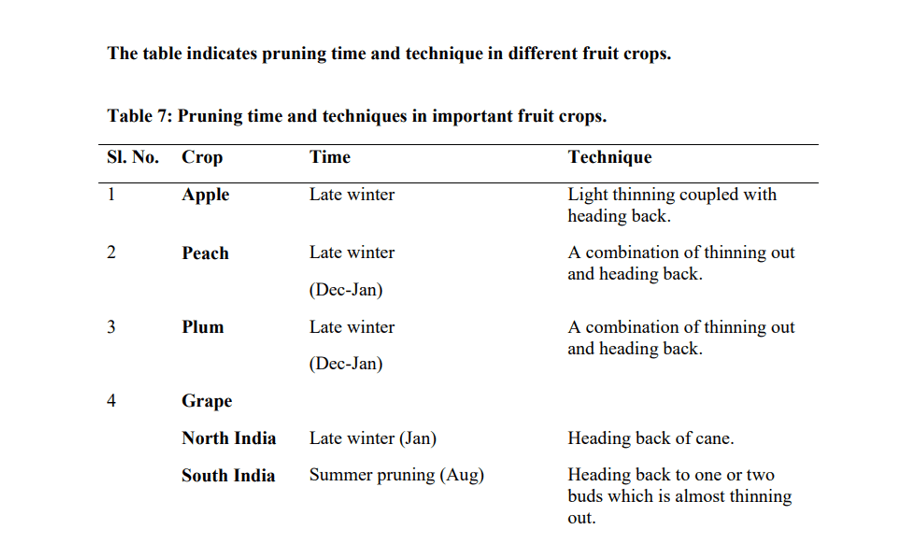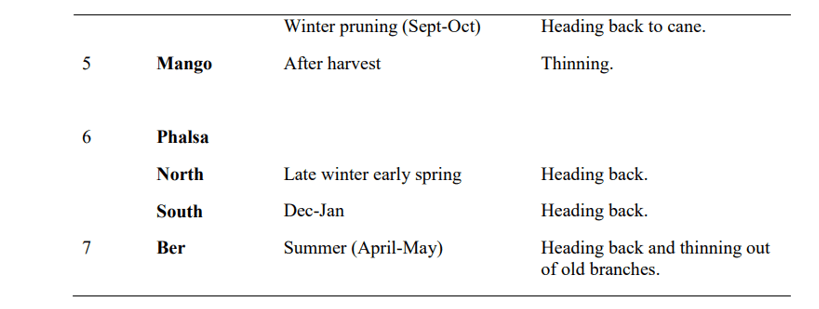Pruning
Definition: Pruning refers to the removal of plant parts like buds, shoots, or roots to strike a balance between vegetative growth and production. It is also done to adjust the fruit load on the tree.
Objectives of Pruning
- To control plant size and form.
- To improve plant performance:
- Improvement in productivity and quality by regulating crop load and extent of flowering.
- Enhancing flower and fruit quality.
- Elimination of non-productive vegetative growth such as:
- Water sprouts
- Suckers
- Dead and diseased wood
- In forest trees, for the production of knot-free timber.
Types of Pruning
There are mainly three types of pruning:
- Frame Pruning:
- Done during formative years to provide shape and strong framework.
- Starts from the nursery stage and continues up to fruiting.
- Performed continuously, regardless of season.
- Maintenance Pruning:
- Helps maintain productivity and uniform plant performance.
- In deciduous trees (e.g., grapes, apple, pear, peach), it’s an annual activity.
- In evergreen trees (e.g., mango, sapota), it’s rare and limited to removing water sprouts, deadwood, and unproductive growth.
- Renewal Pruning:
- Applied to old, declining trees (e.g., mango).
- Involves severe pruning to rejuvenate the plant.
📌 Note: Training is often achieved through appropriate pruning techniques.
Season of Pruning
Pruning should be done with minimal disturbance to the plant’s physiology. It must not interfere with its main functions:
- Fruiting Trees:
- Pruned during dormancy (late winter for temperate fruits).
- In evergreens, prune soon after harvest if required.
- Sometimes stress is induced to bring about dormancy before pruning (e.g., Bahar treatment).
- Structural Adjustments: Done during active growth period, i.e., summer pruning.
- Regular Pruning is common in:
- Temperate fruits: Apple, pear, peach, plum, cherry, walnut, apricot, grape.
- Subtropical fruits: Pomegranate, lemon, ber, guava.
- Rare in evergreens like mango, sapota, and litchi, except for thinning and removal of deadwood.
- However, current trends are shifting toward more regular pruning even in these crops.
Pruning Techniques
Two main techniques used (individually or in combination):
- Heading Back:
- Cutting back terminal portion of a branch to a bud.
- Encourages: Spreading of growth, Bushiness, Compact plant form
- Also known as pinching.
- Thinning Out:
- Complete removal of a branch back to a lateral branch or main trunk.
- Promotes: Open structure, Growth of large-sized plants
- Thinning of growing wood is also called deshooting.



